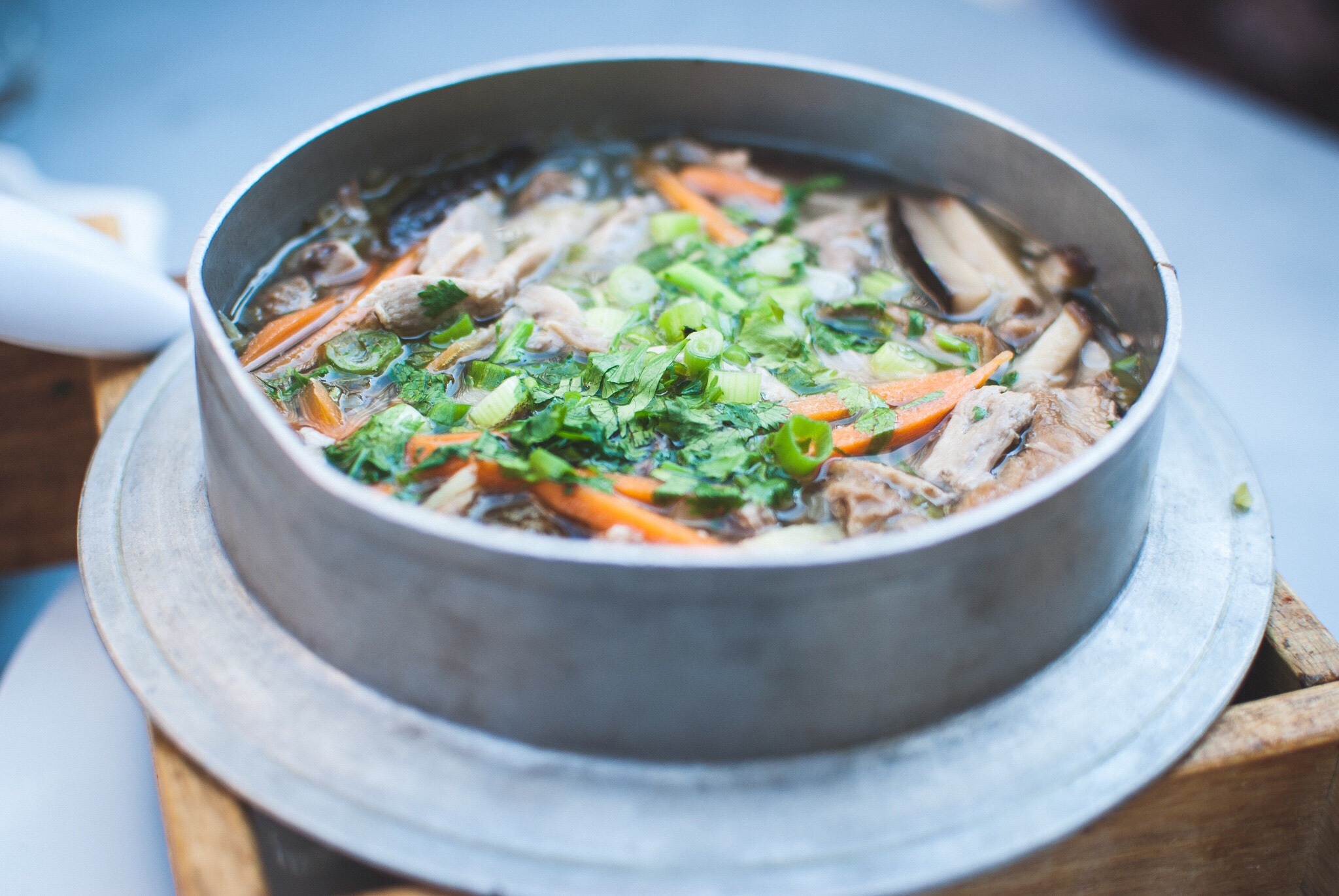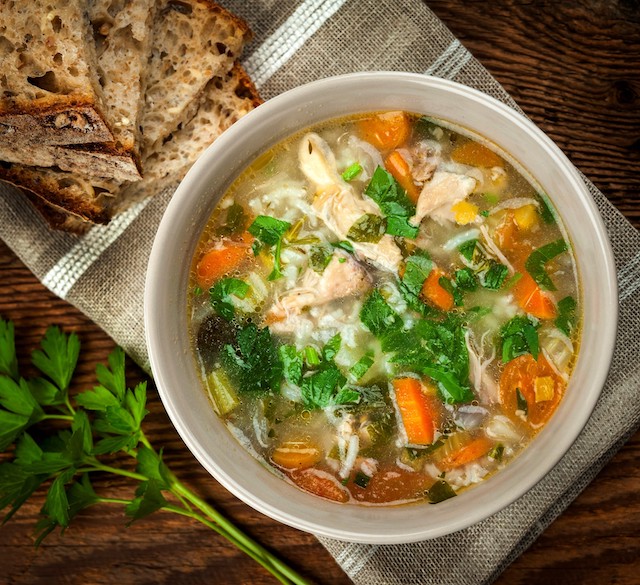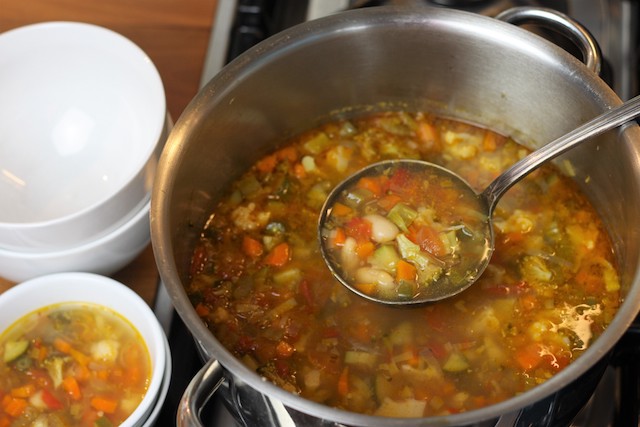- Home
- Blog
- Healthy Weight Loss
- 7 reasons your body will love a bowl of soup!
7 reasons your body will love a bowl of soup!
Written by Catherine Saxelby
on Wednesday, 07 August 2019.
Tagged: healthy cooking, healthy eating, nutrition, soup, weight loss

I love soup, whether in a bowl, a mug or on-the-go. It’s easy to make in bulk and freeze in portions for later so you don’t have to do as much cooking or spend that precious time in the kitchen.
So, why not make up a big pot today and keep it for when you’re starving before a meal or as a between-meal snack? Your body will thank you for it.
Here are my 7 reasons to like soup:
- Soup has what nutritionists call a low ‘kilojoule-density’, which means that it does NOT pack a lot of kilojoules/Calories into its volume. Think of this as the opposite of chocolate — which is a high 'kilojoule-density' food. This is because soup is largely water and fibre.
It’s big on volume but light on fat and kilojoules. Yes, even those soups finished off with a swirl of cream or sour cream. A mug or bowl of soup only adds a tiny 315 kilojoules (75 Calories), which is about the same as one thick slice of bread.

- Soup is hot and filling — great when you’re starving, great when it’s freezing cold outside, and let’s face it, soup IS a comfort food.
- Once made, soup is quick to re-heat in the microwave or on the stove. It’s a hearty convenient snack, which warms you up and quells hunger. Instantly.
- Soup usually has lots of vegetables to help you easily reach your recommended goal of five serves of vegetables a day. For example, from each mug of vegetable soup, you’ll easily get one serve (around one half-cup) of diced cooked vegetables. Often more than two serves.

- Soup is high in fibre so you feel full once you’ve eaten it, you’ll stay satisfied for longer, and you won’t have trouble with constipation. The fibre also sweeps along a proportion of the kilojoules/calories so you don’t absorb them all. Good news for weight loss. Fibre is an essential part of a nutritious diet. It may also help prevent colon and rectal cancer and feeds your gut microbiome so the friendly bacteria grow and multiply.
- Clear soups or broths are mostly water. When it’s cold outside and you don’t feel like drinking gallons of cold water, soup is a great way to stay hydrated.
- Because it’s a ‘normal food’ you can eat soup as part of your maintenance routine once you’ve reached your goal weight. And the whole family can tuck in – no pricey diet shakes, pills or meal replacements! Just good, wholesome, nutritious food!
Want to know more about soup?
If you’d like to know more about what research studies on soup have found, why soup’s a handy weight loss tool, as well as grab some great soup recipes then grab a copy of my new eBook, Souped Up and Sensible Take a look below.
Souped Up and Sensible eBook — what you’ll get
 Introduction and welcome from Catherine
Introduction and welcome from Catherine
10 reasons why soup is your weight loss friend
Why a soup diet?
How the Kickstart Diet put soup firmly on the diet map
Rely on the facts, not the soup fads
Why soup works
Using soup sensibly
My Ultimate Vegetable Soup
My 10 other easy low-kilojoule soup recipes
The run-down on chilled, canned, dried and instant soups
Appendix 1 Nutritional guidelines on soup
Appendix 2 Nutrition analyses in detail
Plus, you get free Bonus Cheat Sheets as quick downloads.
As usual don’t forget that this is a beautifully-formatted eBook with a top design. The text has been professionally-edited and expertly-proofread so it’s easy to read and understandable.
On social media? Look for the hashtag #SoupedUP
The bottom line
This is an extract from my eBook Souped Up and Sensible. You’ll find this and more in the whole eBook. You can buy it here for only $9.99!
You’ll learn how to make soup your secret weapon and how to lose weight the smart, healthy way.
You may also be interested in...
Foodwatch
The Good Stuff
The Boring Stuff
© 2025 Foodwatch Australia. All rights reserved
Website by Joomstore eCommerce










